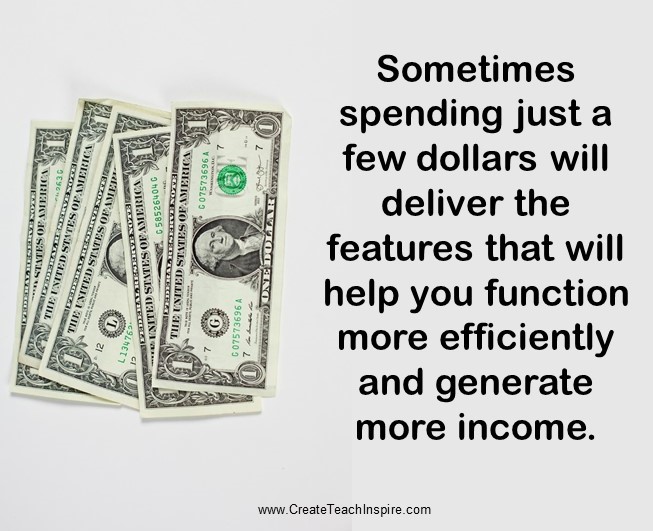I love a bargain. Who doesn’t? Although it may sound good, “free” isn’t always the best deal. In fact, it’s not always even a good deal.
Recently I was watching an online training that is part of the benefits of my paid membership in the Social Media Marketing Society. The presenter was sharing some tools, and with almost every mention of a product, someone would ask, “Is that free?”
Not “How much does it cost?” but “Is it free?”
Nothing is free.
Everything has a cost.
Yes, a lot of companies offer versions of their products that they don’t charge for. It may be free to the user, but there is a cost to the company. Of course, the company’s strategy is usually to get users to upgrade from a limited-feature, no-support free version to a paid version. Free as a marketing strategy can be effective.
But if you’re trying to build an online presence using free resources, you are making a huge mistake. Here’s why:
 Looking for free resources takes a tremendous amount of time. You can spend hours searching for a tool, service or image that you don’t have to pay for. But how much is your time worth and how does that compare with how much you’re saving?
Looking for free resources takes a tremendous amount of time. You can spend hours searching for a tool, service or image that you don’t have to pay for. But how much is your time worth and how does that compare with how much you’re saving?
You usually get what you pay for. I say “usually” because sometimes you can get high-quality free things from companies that are using free as a marketing strategy. But you aren’t going to get support, nor will you get the same level of features that paying customers receive.
An example: We use WordFence to protect our websites. WordFence has a free version that is quite powerful, but I wanted more support and the additional features that came with the paid version (which is $39 a year—less if you buy multi-year, multi-license packages). The security and time-saving benefits of the paid version are more than worth the cost.
 Sometimes the cost for substantially higher quality is nominal. Something free might do the job but might not be exactly what you want. A paid version might cost a few dollars but deliver the features you want that will help you function more efficiently and generate more revenue.
Sometimes the cost for substantially higher quality is nominal. Something free might do the job but might not be exactly what you want. A paid version might cost a few dollars but deliver the features you want that will help you function more efficiently and generate more revenue.
An example: We use MailerLite as our email service provider. MailerLite has a free version that works great but it has limitations and it includes the MailerLite logo on every email. I think that’s fair but I didn’t want their logo on our emails. I also wanted to automate things like our “lead magnets” (the gifts we give people who subscribe to our mailing list). MailerLite's paid service starts at under $100 a year and increases gradually as the list grows. It’s well worth the cost.
Here’s the most important reason focusing on getting things for free will hurt you: It projects the image of someone who isn’t successful or professional. It says you’re either not serious about your business or you’re not very good at what you do.
Think about it: If you’re selling goods or services online, that means you want people to pay you for your products, right? But if you’re not willing to pay someone else for the tools you need to build a successful business, why should anyone be willing to pay you?
There's a real cost to free. Do you want to pay it?
Join the conversation. Share your thoughts on the cost of free below.
Like this blog? Then let’s keep in touch. Click here to join our community so you can receive our updates in your inbox.
- 11 Characteristics of Successful Entrepreneurs - November 17, 2025
- Why the World Benefits from Billionaires - August 4, 2025
- Should You Use AI for Audiobook Narration? - July 28, 2025






